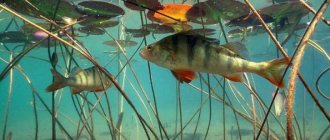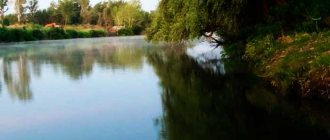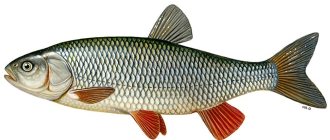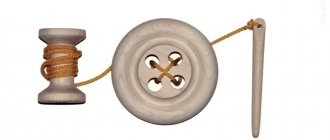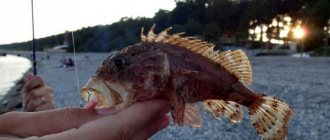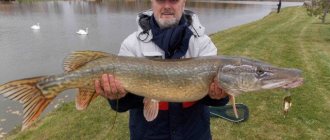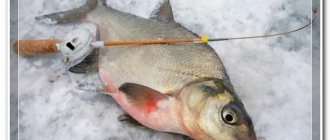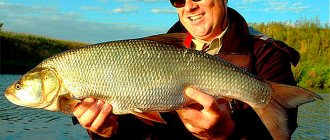The uniqueness of the asp
Asp, aka river pirate, aka grip, sheresper, horse, whiteness, whiteness. And he deserved all these nicknames. A pirate because he is constantly in an active search for food and it is almost impossible for small fish to hide from his rapid attack. Grip, because, despite the lack of teeth, even a relatively large fish will not be able to escape from its mouth. It received the name sheresper because it likes to spread out all its fins, and the horse because, when attacking prey, it jumps high out of the water and hits its surface with its powerful tail, trying to stun its victim. Well, whiteness and shine - for its unique color. Moreover, all these names are telling and only from them can the fisherman have a good idea of what kind of opponent he will have to fight on the rifts, near steep banks, on the current, not far from hydraulic structures and in other promising places.
You can read about the biological characteristics and habits of the asp here.
Fishing with live bait
Fishing with live bait should be carried out in the summer. This is due to the fact that the water warms up well, and the fish begins to behave actively in the upper layers of the reservoir. You can use a small fish as bait. At the same time, we highlight the following recommendations for choosing live bait:
- the length of the fish should not exceed 8 centimeters;
- The width of the selected bait should be small, since the predator will not be able to swallow large bait. Also, a small bait should not be chosen due to the fact that the fish in question does not have teeth;
- It is recommended to attach live bait to small gear that will not attract attention;
- To lower live bait to the bottom, the most ordinary gear can be used. For example, a regular fishing rod with guides will do. You must use a leash. It is recommended to take wires about one meter or more in length;
- when fishing, the fishing line must be constantly taut;
- in most cases spinning is used.
Asp are caught using live bait quite often. If the predator is very active, ordinary live bait, which was selected according to the above recommendations, can lead to a good result.
Where to find asp
The habitats of a river pirate depend directly on the way he hunts. Possessing very good eyesight, in clean running water he sees a cluster of potential victims from a great distance, and this is the main condition why he not only does not like stagnant and muddy water, but simply avoids it. Therefore, asp does not live in small swampy ponds, in rivers with slow flows, peat and other banks that color the water, and where there is a thick layer of silt at the bottom.
But in wide rivers with a pronounced current, in large reservoirs not far from the flooded bed, he feels quite comfortable. But even here it is not distributed throughout the entire water area, preferring those places where the water is cleaner and more saturated with oxygen. All summer, after spawning, the sheresper robbers below the rifts, if any, on shallows with a rocky, sandy or pebble bottom, near steep banks, in eddies formed by the piles of bridges, dams and other structures, in places where flooded trees accumulate. It is here that flocks of small chubs, minnows, bleak and other favorite prey of this river pirate accumulate.
In spring, you should look for asp under branches of trees and bushes hanging over the water. Here he not only hides in the shade from direct sunlight, but also waits for a careless cockchafer, dragonfly, grasshopper or some other tasty insect to fall into the water. Sometimes he doesn’t even wait, but jumps out of the water. The speed that this fish can develop allows it to grab a low-flying insect.
Small fish, insects, crustaceans and worms are the main food of the asp
What kind of bait is used to catch asp?
1. The favorites are long-range spinners (photo 2) and Devons (photo 3), as well as heavy spinners, wobblers and jigs. I’ll tell you more about them below.
2. Our grandfathers also used high-speed wiring of an ordinary nut tied to a fishing line. Asp paid attention, it seems, not to the bait itself, but to the traverse seething trail of bubbles left by the piece of iron and the noise it made. In addition, the effectiveness of such high-speed fishing is based on the “dog” instinct of the asp: if something runs away quickly, you must certainly catch up and grab it, and we will deal with the edibility of this object later. By the way, they are still fishing with a bait, a hybrid of a nut and a Devon, with a similar operating principle (photo 4).
2. Asp can also be caught using “cut tubes”, homemade spinners - metal tubes cut obliquely at different angles (photo 5). They can be made heavier, or they can be caught just like that. The “pipe-cut” is very successful in those regions where the asp is subject to significant fishing pressure - and therefore knows well the typical baits used by most anglers.
3. It can also be caught on plant baits - after all, it comes from carp species.
4. Caught with worms, insects, rafting, baling, boat.
5. Caught with fry - both in the middle layers and from the depths, on the bottom.
In general, it can be caught using most known fishing methods - all types of float and bottom fishing, spinning and fly fishing
It’s easier, it seems to me, to say what it doesn’t catch. Although, you need to think a lot. Maybe spinnerbaits or big jerkbaits are a little worse?
When to catch
The main asp fishing occurs, of course, in the summer. At this time, he is most active, feeds almost all daylight hours and only sinks to the bottom at night to rest and gain strength, so that with the first rays of the sun he can begin his predatory raids again.
However, experienced fishermen can successfully catch asp in winter. The sheresper does not fall into continuous hibernation. It simply drops into wintering pits and if you know where such a pit is located, a half-asleep pirate can be quite tempted to bite. This applies to bodies of water covered with ice. But there are canals near hydroelectric power stations and other technical structures that do not freeze in the winter and where asp live. Then a spinning rod equipped with jig tackle is quite suitable for catching it. Of course, the pike perch bites more often in such conditions, but the sheresper can also react.
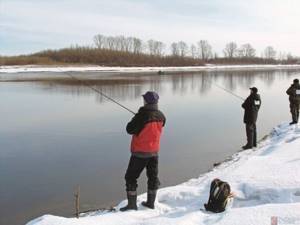
Jig tackle in winter can tempt an asp to attack
Preparing equipment for catching asp using a bombard
In April, the pirate's predatory instincts begin to awaken. But he is not in a hurry to the surface yet, even if the ice has already melted, but he is already making forays not far from his wintering hole.
After the water warms up to a temperature of 9–12 degrees, the asp’s bite takes on a completely unpredictable character. He will not refuse a fry swimming past, but during this period he is busy with other more important things. It's time for spawning. To do this, you need to find a mate and a favorable place. Usually these are small tables with a rocky bottom, where up to several pairs of asps often gather.
After spawning, the river pirate comes to his senses for some time and after a couple of weeks begins to lead his usual way of life. She leaves her temporary friend, constantly patrols her favorite area of the reservoir and actively feeds. This continues all summer. In August and September, even more active zhor is observed. The fish begins to prepare for winter and in the fall, or rather at its beginning, feeds more intensively. And after the water cools, it descends to its wintering holes and loses activity until next spring.
Best Time of the Year for Fishing on Asp
The most optimal time of year for asp fishing is the beginning of June and until autumn.
It is during this period that it is easiest to catch a large specimen, and the chances of catching at least something also become greater.
In principle, you can start trying from the moment the snow melts, but it should be borne in mind that when the water temperature still fluctuates at a low level, the fish hunts at depth, and not at the surface, so it is more difficult to distinguish the feeding areas of the asp, which complicates the process.
In summer, the water warms up, and he begins his hunt for prey in the upper layers, near the surface of the water, so that even the naked eye can see and hear it;
Closer to Autumn, when the temperature begins to drop, it goes deeper and deeper again.
What to fish with
Asp, like most other fish, can be caught with almost any tackle. They catch it with a float rod, with a retractable leash, and with mugs. In this case, either live bait or large insects are used as bait if fishing occurs in the spring. But the first place in terms of catchability is, of course, taken by spinning tackle for asp. And if in late autumn, winter and early spring it is a jig, then in the summer, during the period of greatest pirate activity, surface baits are used, since it is useless to look for it in the depths.
Popper
Despite the fact that the asp is not found where this purely surface bait was invented, it seems to be specially created to catch the sheresper. With proper retrieving, during which the spinner must not only reel in the line with the reel and take the necessary pauses, but also twitch the tip of the rod, the popper begins to “spit.” A special recess in its front part allows it to do this, which is very attractive to predatory fish. In relation to asp, when using a popper, you need to remember that you should not choose particularly large and wide baits.

Popper is a purely surface bait.
Devonian
But the creators of this fishing helicopter, on the contrary, claim that they created the bait exclusively for asp fishing. Devons are heavy enough to make long casts without difficulty, which is very important when catching asp. It is made of polished lead and with its shine will definitely attract the attention of an active predator. During wiring, it creates not only attractive breakers, but also a seductive buzzing sound. The only inconvenience is that it twists the line. You can avoid this by placing a regular swivel in front of the bait. However, experienced fishermen use another Devon with reverse rotation of the blades instead.
Devon is a catchy but expensive bait
Turntables
The asp also responds well to spinners with central loading. They are perfect for him. The wiring should be fast, but not uniform. The method called “on the verge of stopping rotation” is absolutely not suitable here.
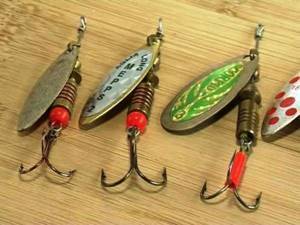
Asp turntables must have a central load
Wobblers and walkers
This type of bait is not used very often, but if chosen correctly it can be a solution to the problem. The main thing is to keep them on the surface while wiring. The second necessary condition is that the wobbler must be driven, similar in appearance to bleak or minnow and not too large in size. It is used most often when fishing from a boat at short distances, since long casting is problematic due to its low weight.
Oscillators
Oscillating spoons are most often used to catch asp. The main condition when choosing them is purity and shine. In most cases, river pirates are not interested in wide fishtails, since they do not resemble his potential prey. Shine is also a sign of potential prey. Spoon baits are good both when fishing from a boat and when casting long distances from the shore.
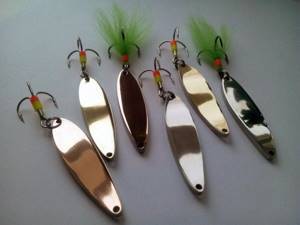
A narrow spoon is one of the most catchy baits for asp
Castmaster
But most fishermen put the castmaster in first place, rightly believing that these are the best baits for fishing for asp. They fly far and accurately. They do not require particularly delicate handling or unique wiring skills. And with all this, there are no more seductive lures for the asp. They are the ones who most remind him of his potential victims, so he will never miss a castmaster floating by, even if he is inactive at that moment.
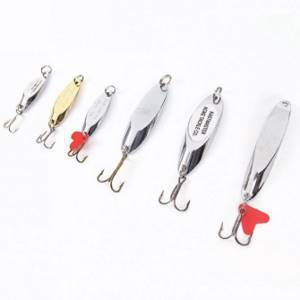
Castmaster – most often used for asp fishing
Jig lures
This method only works in early spring and late autumn, when the asp prefers to lead a bottom-dwelling, semi-dormant lifestyle. And there is one little secret. A regular jigging step will be more likely to seduce pike perch, simply because it is more active at a given time. But as soon as you increase the number of turns of the reel from two or three to four or five and make pauses longer by a couple of seconds, the pike perch ceases to be interested in such wiring, and the asp, on the contrary, becomes excited and attacks.
Lures for Asp | Top 5 Best Lures
There are several types of bait that are most effective for catching this type of fish.
Devon is the most complex bait, which is very difficult to make on your own and difficult to find in a store in terms of price and quality.
When Choosing This Lure, You Need to Consider Several Points:
It should rotate easily;
Good weight in relation to compactness;
It is best to take a bait of this type made of lead;
High rotation speed. It should be noted that for solid Devons it is lower than for combined ones, the blades of which are made of brass or copper.
It is best to fish using the simultaneous use of baits, 2 types - left rotation and right rotation.
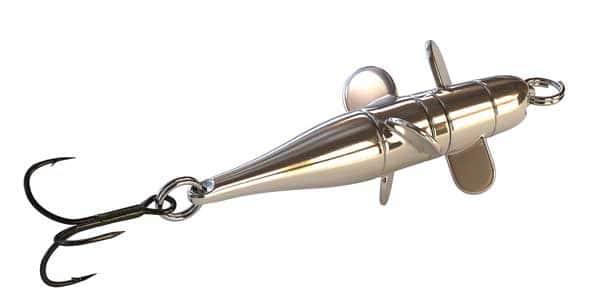
Trihedron - the purpose of this device is fishing in the water column at almost any depth. This is especially true in the spring and autumn.
Due to the fact that the Trehgranka seems to fall into the water, it is most popular among fishermen because of its effectiveness. Most often, hunting with this bait can be found in the Middle Volga, where pike perch are also caught with it.
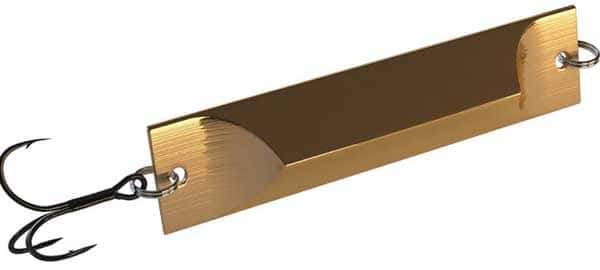
Castmaster is rightfully called a Universal Type Spinner. With its help, asp can be caught in different ways.
For example, in the summer, when fishing mainly takes place in the upper layer of water, they use castmaster lures at high speed, and with the arrival of cold weather, they throw them to the depths and pull them up with steps.
If fishing takes place from a cliff, then with the help of this bait the spoon is pulled to the surface using a stepwise method, but at a careful and slow pace.
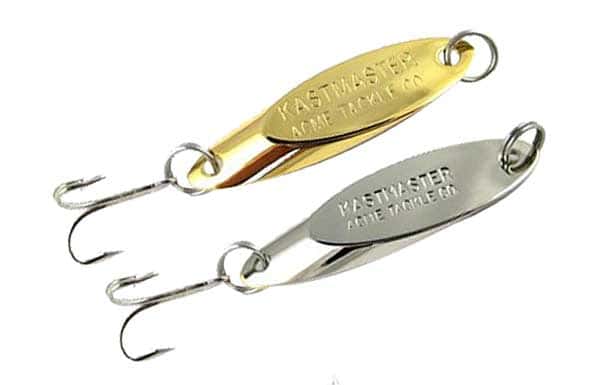
Jig - used for fishing in Cold Water. The use of this bait is used in the Step Type Method.
First of all, it should be taken into account that in the autumn and spring the asp usually feeds near the bottom and especially likes riffles, and it is in such cases that jigs are most effective. On such fishing you can catch a fairly large individual of this type of fish.
Wobbler - provides maximum opportunities with minimal restrictions.
For example, this bait is effective even if the asp does not show itself in any way on the surface of the water. Then you need to stand with the current and throw the gear across the current and slowly pull it up. This method is very effective.
Or another method. You should choose a place on the edge with a shallow depth - about 30 m from the spit and cast. A very effective bait and justifies itself in catching asp.
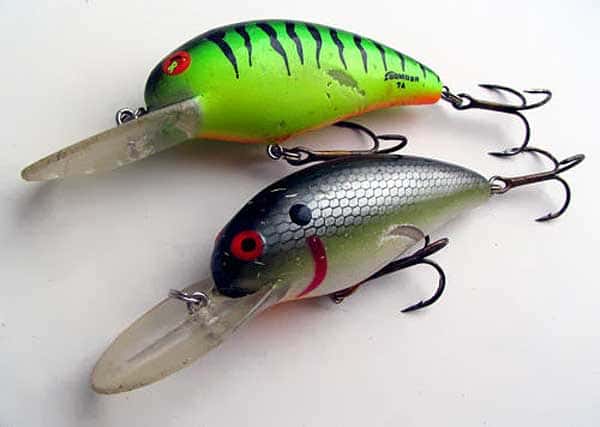
Tackle
The general equipment depends on how we fish. The most popular gear for asp fishing is a spinning rod and a float rod.
Spinning
You can catch asp with a spinning rod all summer long. Depending on the size and topography of the reservoir, it is possible to catch a sheresper from the shore, but more often they go out to hunt for it by boat. This provides some benefits to the angler. A sharp-sighted asp is not so afraid of a foreign object located on the water. But when he sees a human figure on the shore, he will prefer to move to another place. For this reason, on a boat you can get much closer to the hunting river pirate and in this case a particularly long spinning rod is not required. A 2–2.5 meter long stick with a spinning reel and a good set of baits and spinners will ensure exciting and productive fishing on the Volga, the Dnieper, and in Europe. Monoline and braid work equally well, so this choice is a matter of personal preference.
When fishing from the shore, you will need a rod 2.5–3 meters long, because you will have to cast the lure at least 60 meters. Although, if you have experience, it is quite possible to use the tactic of floating the bait to the desired location. This trick, of course, will not work with spinners, but with some types of wobblers, walkers, poppers and flies it is quite effective. The bait is cast a little downstream and floated on an open reel to the asp’s camp. The method requires very precise casting and even more precise calculation of the current, which should bring the bait right under the nose of the shereper.
Float tackle
This method of catching asp is most effective in the spring, when cockchafers, dragonflies and other insects fall from tree branches and bushes into the water. And you need to catch sheresper in precisely such places. Firstly, you can camouflage yourself well on the shore among the same bushes and carefully float the bait directly under the branches. Secondly, you can collect bait right here.
The length of the rod directly depends on the fishing location, but it is better not to take anything shorter than 3.5 meters. There is also no need to use a fishing line thicker than 0.3 mm. The asp will see her and will never dare to attack. You can use cockchafers, grasshoppers, dragonflies, other large insects and even small frogs as bait.
Where should you catch asp?
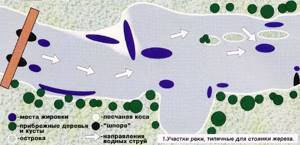
When going on an asp hunt, it is very important to know the promising places where this predator prefers to be. Without such knowledge, it makes no sense to even talk about catching him, let alone catching him. As a rule, such an approach, when this factor is not taken into account, turns out to be a waste of time. First of all, this applies to novice spinning anglers who believe that by throwing gear anywhere in a body of water, they can catch any fish. Unfortunately, this is a misconception. Over time, every novice fishing enthusiast will definitely understand this simple truth. As for experienced spinning fishermen, they are able to accurately determine the location of predatory fish by carefully examining the surface of the reservoir. They are anywhere, they don’t throw the spinning rod.
Asp is a heat-loving fish and feels good only in warm regions, where its largest population is located. In this regard, the period of active asp biting is limited to a maximum of three months. Typically these are the warmest summer months.
In the reservoirs where the asp is found, there are places where the asp constantly feeds. By the way, this factor is also typical for other species. It is places like these that should be fished in search of this amazing fish.
Jets and riffles
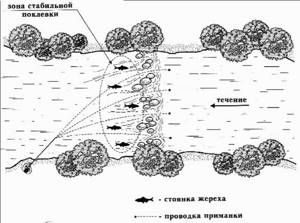
Catching asp in such places is always characterized by effectiveness, as well as the capture of a large specimen. A wide stream with a rocky bottom may be especially promising. Asp does not like water areas with a muddy bottom. It prefers places with a hard bottom, where there may be piles of stones or scatterings of shells.
It can also be located in places where these jets begin or end, as well as in places where the jets have a reverse flow. In such places, the spinning rod is cast perpendicular to the current or slightly higher upstream, at about 45 degrees. The bait is constantly controlled by the tension of the fishing line. At the same time, you should pause periodically, creating the appearance of a tired little fish moving against the flow. It is not a fact that the game of bait will interest the asp, but you can always try.
Braids
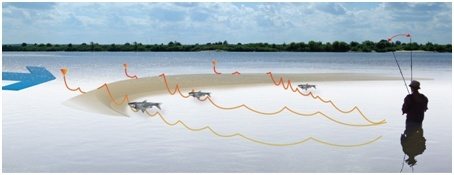
They are also a place for asp fishing. As a rule, other types of fish, including predators, also love such places. This is due to the fact that there are a lot of small fish on the spits, as there is something to eat on them. In addition, the braids are a kind of protective place for “trifles,” and “trifles” always attract a predator, such as an asp. You can throw the bait both across the spit and along it. It is very important to know where the braid begins and ends. The spits differ from other water areas in that they form a special bottom topography, where there are different depths, smoothly transitioning from large to shallow depths.
Cliffs
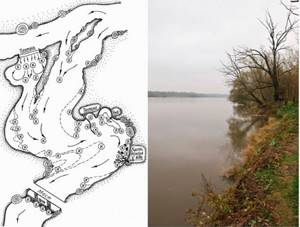
Breaks appear as a result of the activity of the flow, which changes the direction of the flow along the arc. A cliff forms on the outer side of the arc, and on the inner side there is a gentle bank, where the depth smoothly transitions from a minimum value to a maximum value. As a rule, in places of cliffs there is a maximum depth that attracts most fish. This is due not only to the depth, but also to the fact that various components suitable for food are constantly washed away from the shore. Therefore, such places are also interesting for small fish, and predators, including asp, are always interested in small fish.
Main channel
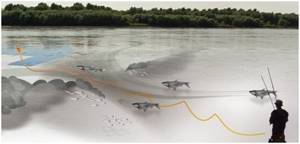
The asp prefers to be in its own territory, which it constantly controls and through which it constantly moves in search of fish fry. The main channel is no exception, as there are many interesting places to be found here. “Trifle” prefers to stay in the shallows, where it is not so easy for large fish to reach. But the asp very often swims into such places and feeds on young fish. You can find out the location of the asp by its characteristic powerful bursts. These are the moments when the asp drowns out the fry of fish, after which he eats them, as they lose their orientation. Having studied the predator’s route, you can try to throw the bait ahead of the curve so that it is in its path. If the bait has a believable action, then there is a high probability that the asp will attack it.
Parking lots
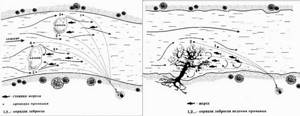
To implement such an approach to fishing, you need to know the asp’s mooring sites. He can stand in one place for a long time, waiting for a potential victim. These can be rifts or underwater boulders, as well as underwater obstacles of artificial origin. Such places are characterized by the presence of fast and slow currents. Fishing a place should begin at close range with a gradual transition to long-distance casts. As a rule, in 3-4 casts a place is caught, after which you can move to another promising place.
The asp can be in the shade of overhanging trees, especially on cloudy days. It is better to fish such places from early morning until 10 a.m. or in the evening, from 5 p.m. until sunset. After darkness falls, the asp stops its activity.
By bursts

In the daytime, starting from 10 am, you can switch to catching asp by splashes. The main thing is to accurately throw the bait in the area where there was just a splash. At the same time, it should be remembered that by the time the bait splashes down at the splash point, the asp will no longer be there. During this time, he can move about five meters. And here it is very important to determine the direction of movement of the asp in order to throw the bait ahead of the curve, and then move it accordingly. The asp is one of those fish that, even with the slightest errors in the wiring, will not dare to attack.
Main
When going fishing to catch an asp, you must remember that this predator is strong, swift, active and very careful. Excellent vision allows him not only to see prey, but also to notice danger at a very great distance. The fisherman must do everything in his power so that the sheresper does not suspect a trick. Therefore, it is better to catch it from the shore either at a long distance or from cover.
Finding a robber asp is not difficult. Characteristic loud bursts will indicate its presence and activity. This usually happens at shallow depths, below rifts, in places with a pronounced reverse current, under branches of bushes and trees hanging over the water. In places where fry or schools of small fish usually accumulate.
It is necessary to determine what the asp is currently being caught at at a given point using an experimental method. The river pirate is picky and can change his preferences several times within a couple of hours. Carrying an arsenal of baits with you is not a collection, but a necessity. But you won’t have to carry the bait. Like any other predator, you can lure an asp only by skillfully playing bait.
The splash casting method works well. Having noticed at what point the asp made another stunning jump, you need to immediately throw the bait there. If it splashes down at some distance from the center of the diverging circles, it’s okay - the sheresper never stands in one place. The main thing is to start retrieving immediately so that the bait does not have time to go to depth and stays almost on the surface.
Knowing all these subtleties and nuances, you can passionately and effectively catch this beautiful and strong predator, receiving indescribable pleasure from defeating a worthy opponent. And if you also have culinary talent, then you can cook tender sheresper meat in such a way that it will become a real decoration for the holiday table.
Tips for Beginners | Several Main Rules on How to Catch Asp
If a person has never gone fishing for Asp, he will need to know at least the basic method of catching this fish.
The traditional method of catching asp is using a spinning rod. To do this, you will need to equip it with propeller-type spinners called “Devon”.
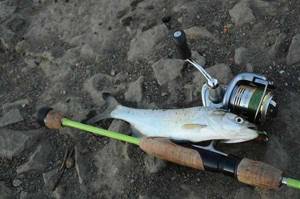
With this kind of gear you need to cast a little further than the spots where the fish splashes.
The asp swallows the spinner the moment it sinks into the top layer of water, so further actions require accuracy and speed.
In some cases, the fish swallows the “Devon” immediately, at the moment when the casting circles have not yet dispersed; at such moments, the asp begins to actively hunt for it and the illusion of a “game” is created.
After the fish grabs the bait, the line suddenly becomes tense, a jerk is felt at this very moment, you need to hook, but with great care, since either the line or the asp’s mouth may break.
When the fisherman is convinced that the fish is on the hook, the line must be lowered and slowly reeled in so that it can be carefully brought to the shore.
If Asp was hooked correctly, then his behavior is predictable - he will either try to go downstream, or go to a depth opposite to the fisherman.
At this stage, it is important not to loosen the tension of the fishing line, since this type of fish is very shy and may try to break away several times, which will lead to the breaking of the fishing line or damage to its oral cavity.
When carrying out competent actions and following all the rules, the chances of successful fishing even for beginners increase several times.
Catching asp by rafting from a boat
Very effective fishing, especially in late autumn. Large asp often leads a solitary lifestyle. For housing and hunting, it chooses secluded places - holes and washouts under the banks, often in heavily snarled places. Or it stands on the border of the current and the waterways behind and under fallen trees.
When fishing this way, you should be quiet and careful. No sharp sounds, screams, or hitting the boat with spinning rods or oars. The boat quietly floats down the center of a channel or river, the spinning operator makes precise, precise casts under the shore, behind snags and fallen trees. The best bait for such fishing from the great asp specialist Alexey Kharitonov from Samara is a “shaker” like LittleCleo from Acme (photo 17). The weight of the spoon is selected depending on the fishing conditions - river depth and flow speed. Last year, Alexey caught an asp weighing 8 kg by rafting on the Volga routs, which, believe me, is very worthy when fishing short.

